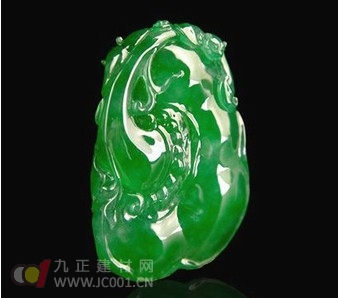Due to the wide variety and unique shapes of jade, there are many counterfeit items on the market. Besides acquiring theoretical knowledge, collecting jade requires attention to five key aspects:
First, observe real pieces. Jade collecting is a practical art that requires constant exposure to genuine specimens. If possible, visit museums, high-end craft shops, or antique stores in major malls and tourist areas to study the appearance, texture, and color of authentic jade items. This hands-on experience helps you recognize the subtle differences between real and fake pieces.

A great way to start is by visiting flea markets or street vendors where small jade ornaments are sold. For beginners, starting with smaller, more affordable pieces is ideal. These items are inexpensive, often costing just a few yuan, but they allow you to build a foundation of understanding about texture, color, and feel. Over time, this experience will help you make better investment decisions.
Second, prepare for long-term investment. Jade is a handicraft, and its value depends largely on material quality and craftsmanship—factors that are relatively stable. As a result, jade prices have steadily increased over the years, with fewer fluctuations compared to other collectibles like paintings. Unless you have access to low-cost purchasing channels, short-term investments may not be wise.
Third, don’t overestimate your ability to identify jade by sight alone. While some basic identification can be done visually, it’s not always reliable. Even experts can sometimes be mistaken, especially with the growing number of synthetic materials available today. Before buying a significant piece, it’s best to consult a professional lab or expert who can use scientific tools to analyze the jade's color, transparency, luster, density, and hardness. This ensures you make an informed decision and avoid costly mistakes.
Fourth, focus on craftsmanship. Among Chinese arts such as calligraphy, porcelain, and jade, jade’s value is most influenced by the skill of the maker rather than its age. A historically valuable piece with simple craftsmanship might have high archaeological interest, but it may not fetch a high price in the international market. On the other hand, modern jade with excellent craftsmanship can command premium prices. Always prioritize quality of work when selecting jade items.
Fifth, consider both ancient and modern jade. Ancient jade holds special appeal due to its historical significance and rarity, which can drive up its value during certain periods. However, it also comes with more uncertainties. Modern jade, while not as old, can still hold strong investment potential if it's well-crafted and has distinct characteristics.
Today’s modern jade products are widely available in malls and tourist shops, though they often come with high price tags. While their short-term investment value may be limited, jade is one of the most durable collectibles. With proper care and appreciation, its value can grow over time. So, if you find a piece that is beautifully made and has clear collection value, it could become a valuable addition to your collection in the future.
Small Battery Operated Air Pump,Small Air Compressor Pump,Small DC Air Pump,Small DC Electric Pump,Small Diaphragm Air Pump
Shenzhen DYX Technology Co.,Limited , https://www.dyxpump.com
![<?echo $_SERVER['SERVER_NAME'];?>](/template/twentyseventeen/skin/images/header.jpg)